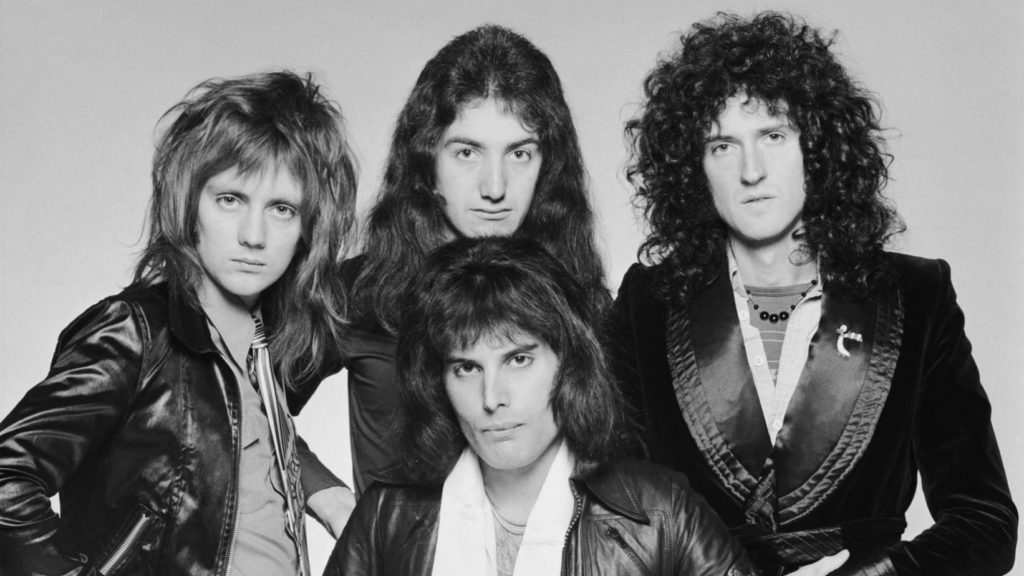
This was, of course, the big album that changed everything for Queen. Bolstered by the success of Sheer Heart Attack, but frustrated with the lack of monetary compensation (the band was broke) Queen successfully negotiated their way into new management, a new contract, then headed into the studio to make the best album they could.
A Night At The Opera contains a very diverse set of songs, but this release feels cohesive, a “complete” Queen album from start to finish. Actually, it may be their most definitive recording, with songs ranging in style from opera to hard rock to 20’s style jazz. This was intentional from the beginning of recording.
Opening with “Death On Two Legs”, we get a symphonic cacophony of dissonance – one could almost see this as the orchestra tuning in those final seconds before the performance proper begins. When having a particularly rough day and am asked how I am doing my response could very well be “The first 37 seconds of A Night At The Opera.”

Many of the songs segue into another, providing a great album listening experience, and while there are some fantastic singles on display here, this really is a full album, and Queen were very much aware of that fact. Recorded at several different studios they came down a little too close to the wire with their deadline for getting everything done before heading out on tour, but you wouldn’t know it. There isn’t anything on the album that feels rushed or half-finished.
From the hard rocking “Death On Two Legs” we shift into an almost vaudeville style of tune with “Lazing On A Sunday Afternoon” and then back into hard rock with “I’m In Love With My Car” (a typical Roger Taylor track which he sings lead on). Interestingly, despite it being played on the radio occasionally these days, it wasn’t the first song by Roger Taylor to be released as a single, that would come a few albums later.
Wouldn’t you just love to hear what Freddie Mercury would have done with that song?
The next song on the album was a single, penned by bassist John Deacon, was a big hit and ranks up there with some of the more iconic Queen songs – “You’re My Best Friend” which is one of the nicest songs pretty much ever written.
A Night At The Opera offers up a diverse range of songs in large part because each of the four band members contribute so much. From a standard rocker to a lovely ballad we shift to an acoustic science fiction think piece (“39”). Actually, I didn’t even quite understand the song completely until it was explained to me well into adulthood. Then we shift back into rocking gear for another number (“Sweet Lady”) then the side finishes up with another vaudeville style number, and one of the oddest on the album.
A Night At The Opera is a landmark album and I could go on and on analyzing its importance in rock history. Actually, I’m sure there are acres of words analyzing the album out there, but that’s not my intention. Thing is, it’s is difficult to talk much about the album without some sort of analysis, because side two isn’t as musically diverse as side one, but this is where things get even more grandiose and the band’s use of the studio as an instrument is apparent.
I say all this because side two opens up with one of my least favorite Queen songs – “The Prophet Song”. I remember in high school listening to the cassette of A Night At The Opera with headphones on and being blown away at how much the studio was used as an instrument, even more so than on “Bohemian Rhapsody” and was amazed that more people didn’t know about this song. As I listened to the album in my 20s I enjoyed the song less and less and by the time I got to my 40s I just skipped over the song when playing the album. In my opinion it goes on too long (kind of like this paragraph) and would have benefited from half the nearly 8 and a half minute run time. It’s a great song, and perhaps a better use of the studio than most other songs on the album, but because of it’s length I really have to be in the mood to listen to it all the way through.
Following this we get another Mercury ballad, “Love Of My Life” which is presumably for his longtime girlfriend Mary Austin. Along with “You’re My Best Friend” possibly one of the sweetest numbers in Queen’s catalog. Then we get a number that for the longest time I thought was another of Mercury’s projects from his obsession with old-timey music, but instead it was written by Brian May.
Then there is the crown jewel, “Bohemian Rhapsody” which I shouldn’t even have to say anything about. And how can you follow that up? May’s rendition of “God Save The Queen” as a curtain call to the grand finale of the album. In some ways the album really is structured like an opera, with different sections and types of characters each taking a turn at the spotlight.
The rest, as they say, is history.




















